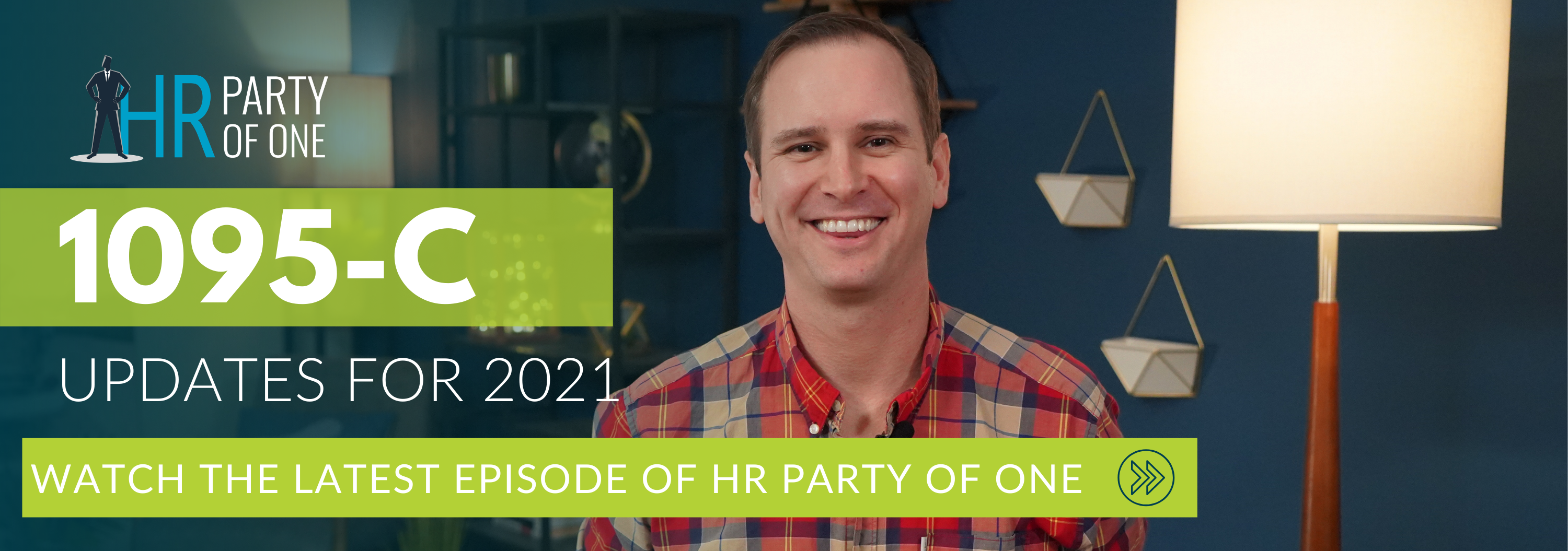Written by
Bretton Chatham
Bretton is an aPHR-certified member of the Marketing Team at Bernard Health. He writes about HR, compliance, and benefits solutions.
ACA Affordability Threshold Lowered for 2022
.jpg)
The IRS recently announced that it will lower the affordability threshold requirement for employer-sponsored health plans in 2022. Depending on several factors, this change could affect your organization’s costs in the next year.
Find out more about the affordability threshold and what HR and employers need to know to stay compliant under this changing requirement.
What is the ACA Affordability Threshold?
The affordability threshold is a key component of the employer mandate under the Affordable Care Act (ACA). One of the ACA’s regulations stipulates that employers must offer health insurance that qualifies as minimum essential coverage (MEC). To qualify as MEC, an employee’s premiums for the lowest-cost, self-only option do not exceed a particular percentage of their household income.
This minimum rate is the affordability threshold, also known as the cost-sharing limit or the shared-responsibility affordability percentage.
Does ACA Affordability Apply to Small Employers?
The affordability threshold does not apply to all small and midsize businesses. According to the ACA, an applicable large employer (ALE) is an organization that employs at least 50 full-time employees—including full-time equivalent employee (FTE)—on average during the prior calendar year. Seasonal workers do not count toward this total.
ALEs are required to comply with ACA regulations such as offering health plans deemed affordable to qualify as MEC.
What is the New Affordability Threshold for 2022?
Each year, the IRS issues an updated affordability threshold to account for changes in market conditions, healthcare premium growth, and the American economy.
In late August, the IRS announced the rate for 2022 will be 9.61%. This means an ALE’s lowest-cost, self-only coverage option cannot exceed 9.61% of an employee’s household income, starting January 1, 2022, for calendar year plans. For plans that renew midyear, the new affordability threshold will only apply beginning on their effective date.
The new affordability threshold is lower than 2021’s rate of 9.83%, which could result in some ALEs finding themselves out of compliance.
What are the Consequences of Noncompliance with the Affordability Threshold?
For non compliance, the IRS establishes two potential penalties, called “employer shared responsibility payments”:
- An ALE will owe the first type of employer shared responsibility payment if it does not offer MEC to at least 95% of its full-time staff AND at least one full-time employee qualifies for the premium tax credit (PTC) to purchase coverage through the government marketplace.
- On the other hand, even if an ALE offers MEC to at least 95% of its staff, it could still owe the second type of employer shared responsibility payment for every full-time employee who receives the PTC for purchasing coverage through the government marketplace.
You can find more information on how these penalties are calculated here.
Additionally, the IRS clarifies three instances in which employees may qualify for the PTC:
- The employer-provided MEC isn’t affordable, as determined by Form W-2 wages, an employee’s rate of pay, or the federal poverty line.
- The employer-provided MEC doesn’t provide minimum value, meaning that it doesn’t cover at least 60% of total allowed cost of benefits that can be expected to be incurred under the plan.
- The employee is part of the 5% of a full-time workforce that isn’t offered MEC.
What is an Affordability Safe Harbor?
The IRS understands that employers likely don’t know the household income of their employees, which can complicate whether or not an ALE offers at least one health plan that qualifies as MEC. So, the agency has established three “safe harbors” that can be used to determine the affordability of employer-sponsored health coverage:
- Form W-2 wages
- An employee’s rate of pay
- The individual federal poverty level (FPL)
For example, the 2021 FPL was set at $12,880 for a one-person household. So, for organizations that use the FPL safe harbor to determine affordability, employee premiums can’t exceed $103.15 per month (9.61% of the FPL).
How Can Employers Stay Compliant with the New Affordability Threshold?
Since the FPL safe harbor is the most commonly used, ALEs using this metric should note that this is the first time the FPL safe-harbor amount will decrease, starting January 1, 2022, for calendar year plans. For plans that renew midyear, ALEs using the FPL safe harbor won’t be able to calculate their contribution limit until the Department of Health and Human Services announces new FPL guidelines for the year, usually in January or February.
Each year, organizations need to make adjustments to their health plans to account for adjustments to affordability thresholds. These can include:
- Tweaking Health Plans Offered: In addition to a more expensive health plan, ALEs can offer different, more affordable health coverage that meets the affordability requirements determined by the IRS.
- Increasing or Decreasing Employee Cost-Sharing: ALEs can also change how much they contribute to each individual employee’s coverage plan to ensure that it meets the affordability requirements.
Ultimately, the regular changing of requirements means it’s more important than ever for small and mid-sized businesses to work with a trusted benefits broker. These partners can help organizations stay compliant with the ACA—and avoid costly fines for noncompliance—and provide health coverage deemed affordable to employees, which can be an effective way to recruit and retain team members.
Written by
Bretton Chatham
Bretton is an aPHR-certified member of the Marketing Team at Bernard Health. He writes about HR, compliance, and benefits solutions.
Related Posts
Part-time work is becoming increasingly common in today’s workforce—especially for...
As you know, healthcare and benefits can be complicated, which can make the enrollment...
With the deadline for filing and distributing 1095-C forms approaching, staying...
A strong paid time off (PTO) policy helps retain current talent and attract prospective...







Submit a Comment